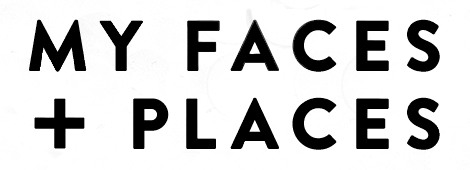Loving Lisbon

Commercial Square in Lisbon
I have a good feeling about this trip to Lisbon. For a start the flight with TAP Portugal’s national airline departs on time, the flight is smooth and the service friendly and attentive. We land safely in Lisbon and the taxi booked for our transfer is waiting for us. Yay, Lisbon here we come!
The Glorious Past Of Lisbon
When a city is built on seven hills, expect a good work out when exploring the city on hilly undulating terrain. We huffed and puffed our way taking in the many wonderful sights and sounds of a city that was once one of the greatest cities in Europe. The economic and political power of Portugal reached its zenith in the 15th and 16th centuries during the period of the Portuguese Age of Discoveries when the nation’s explorers and navigators, notably Vasco Da Gama and Magellan among others, sailed to Africa, Asia and the Americas in search of fortune and colonies for their country. They brought spices and precious treasures back to their homeland to enrich the coffers of the country. It is an elegant city with architectural splendour and cultural attractions.

The Santa Justa Elevator was first used in Lisbon in 1902. It rises 45 metres and the design was inspired by the Eiffel Tower.

Lisbon’s funicular railways are an essential part of public transport as this city is surrounded by 7 hills.
Castelo de Sáo Jorge (Castle of St George)
High on one of the hills stands the semi-ruin Castle of St George built by the Moors in the 10th century. After the reconquest by the Christians in 1147 it was modified and extended to become a fortress and royal palaces by the various rulers. Its strategic position on high elevation overlooking the River Tagus was an ideal protection against advancing enemies from land and sea. It was built in a rectangular shape with ten towers fortified by thick walls and surrounded by a moat that is now converted to a grass embankment. It commands a panoramic view of the city from the large terrace, which still holds some of the cannons used in combat in historic times. It is one of the top tourist attractions of Lisbon.

A view of the Santa Justa Elevator with the ruins of the Carmo Convent that was destroyed in the 1755 earthquake.
The Lisbon Story
Lisbon’s chequered history of natural disaster, political unrest, defeat and triumph are curated at the Lisboa Story Centre taking visitors on a historical journey in an audio-sensorial experience using multi media and models spanning over 20 centuries in chronological order. The earthquake of 1755, which killed over 100,000 people, is portrayed in a film followed by the rebuilding of Lisbon by the Marquis of Pombal, the then Prime Minister of the country. It is worth visiting the centre to appreciate how history and important historical figures shaped the city.
The rich heritage of the city is set in stones in many of the city’s wonderful monuments and squares. The two most prominent squares are Terreiro do Paco or Commerce Square and Rossio Square that are linked by Rua Augusta, the lively street with boutiques, bars, shops and restaurants buzzing with life day and night. Rossio Square pays tribute to Pedro IV, a 19th century Portuguese king who was the first ruler of Brazil, the then Portuguese colony. Standing proudly on a colossal column, his statue lords over the city flanked by two ornate fountains. The plaza has been the centre of activity since the 14th century and has been the scene of notorious rebellions, celebrations and execution. Rua Augusta stretches all the way to Rua Augusta Triumphal Arch, which was built to commemorate the reconstruction of the city after the great Lisbon earthquake in November 1755. The prominent arch is supported by six towering columns crowned with statues of various important historical figures and three allegorical sculptures representing Glory in the middle flanked by Valour and Wisdom. The arch leads to the Commerce Square, a massive plaza by the Tagus River that is still the epicentre of activities in Lisbon today. In the middle of the square stands the imposing statue of King Dom Jose I (1750 – 1777) riding a horse trampling over snakes, symbolising triumph over his enemies. This square has witnessed historic political upheaval and was the scene of the assassination of King Carlos I, the penultimate king of Portugal on 1 February 1908. His son Prince Manuel succeeded him and was the last king of Portugal before it became a republic in 1910 by a rebellion that forced the royal family to live in exile in England.

Lisbon Cathedral or the Patriarchal Cathedral of St Mary Major is in the Alfama district of Lisbon. The mass weddings are held here in the Festival of St Anthony (the patron saint of marriage and match making)
Jeronimos Monastery
The Jeronimos Monastery is the most famous landmark of Belem, a former port and previous wealthy district of royal and aristocratic residences in historic Portugal. All the great navigators and explorers set off on their voyages of discovery from the port here. This magnificent ecclesiastical building was built in 1501 under the order of King Manuel I (1469 – 1520) and took a hundred years to complete funded by the riches from Africa and the Orient. The king bestowed the monastery to the monks of the Order of St Jerome with the order of praying for the king’s eternal soul and for the safety and spiritual guidance to navigators and sailors who sailed from the port of Restelo by the mouth of the Tagus. The splendid façade of the monastery is clad in ornate towers, spires and fluted windows. The grand entrance leads to a quadrangle surrounded by sweeping arches, cloisters and naves with exquisite stone works and carvings. Attached to the monastery is the beautiful Santa Maria church housing the tombs of Vasco da Gama and the royal families.
Discoveries Monument and Belém Tower
Across the monastery is the 50-metre high Discoveries Monument built in the shape of the prow of a caravel, the ships used in early Portuguese exploration. It was inaugurated in 1960 to commemorate the 50th centennial of the death of Prince Henry the Navigator who was instrumental in initiating the golden Age of Discovery. The imposing monument represents the nation as masters of the sea in the 15th and 16th century. Thirty-three figures who had played important parts in that era including Prince Henry leading the way followed by Vasco da Gama, Magellan and St. Francis Xavier among others are sculptured on both sides of the monument. Visitors can enjoy the panoramic view of the Tagus River and Belém at the top of the building. Nearby is the Belém Tower, a 30metre fortified four-storey tower built in the early 16th century to guard the mouth of the Tagus River from enemies. It is a UNESCO World Heritage Site monument.

Discoveries Monument to honour Prince Henry the Navigator who initiated the successful Portuguese explorations during the 15th Century in Lisbon.
Lisbon has evolved into a dynamic modern city without compromising its rich heritage and history. Its new town with its modern structures of sparkling glass towers is a big contrast to its old town of beautiful stone ornate buildings. The main attraction in the new town is the Lisbon Oceanarium. It houses an impressive collection of marine creatures including penguins, otters, sharks, rays, and the peculiar-looking sunfish among a plethora of other ocean species. Lisbon has a host of attractions to offer visitors of every taste. It has an excellent and inexpensive public transport and accommodation to suit all budget. We stay at Inspira Santa Marta a lovely Feng Shui-friendly hotel tucked away in a quiet street yet minutes away from the main attractions. The friendly staffs make you feel welcome when you walk through the door and our comfortable room with mood lighting completes our wonderful stay in Lisbon.
This travel article has described the various aspects of Lisbon for me to be Loving Lisbon.
Jerónimos Monastery and the Tower of Belém are listed as UNESCO World Heritage Sites.
More information can be obtained from Tourism of Lisbon.
TAP Portugal has daily flights from Manchester, London Heathrow & Gatwick to Lisbon; prices start at £121 return including all taxes and surcharges. For further information on the web or call 0345 601 0932.
Follow my blog with Bloglovin
All rights reserved © 2015-2016 MyFacesAndPlaces.co.uk
















